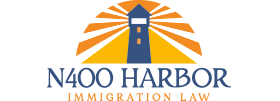
The concept of family based immigration is founded on the principle of family reunification, which is a cornerstone of U.S. immigration policy.
Family based immigration is a system that allows U.S. citizens and lawful permanent residents (LPRs) to bring their family members from abroad to live with them permanently in the United States.
We wrote this article to help you understand the nuances of family based immigration, including its basic principles, process, eligibility criteria, and the various types of family based immigrant visas available. We’ll also look at the required documents for family based immigration, common challenges you may face, and some tips for navigating this complex process.
While immigration law can be a complex and intimidating field, it doesn’t have to be. With the right information and guidance, it is possible to navigate this process successfully. Read on to learn more about family based immigration. Before we get into it, if you have questions about Family Based Immigration and wonder if you qualify, give us a call today for a free consultation.
IN THIS ARTICLE
The Basics of Family Based Immigration
Family based immigration is one of the most common ways for individuals to obtain permanent resident status in the U.S. This process involves an individual who is already a U.S. citizen or an LPR sponsoring a family member for a green card. The sponsoring individual, known as the petitioner, must meet specific criteria, and the family member, known as the beneficiary, must also meet certain eligibility requirements.
There are two primary categories for family based immigration: immediate relatives and family preference categories. Immediate relatives include spouses, unmarried children under 21, and parents of U.S. citizens. There is no limit on the number of visas available in this category each year. Family preference categories, on the other hand, include other family members such as siblings and married children of U.S. citizens, and spouses and children of LPRs. There are numerical limits on the number of visas available in the family preference categories each year.
It’s important to note that family based immigration is not just about rules and regulations. It’s about families and their hopes and dreams. It’s about bringing loved ones together and building a life in a new country.
The Process of Family Based Immigration
The process of family based immigration begins with the petitioner filing a petition with the U.S. Citizenship and Immigration Services (USCIS). This petition, known as Form I-130, Petition for Alien Relative, establishes the qualifying relationship between the petitioner and the beneficiary. Once the petition is approved, and a visa number is available, the beneficiary can apply for a green card.
If the beneficiary is outside the U.S., they will apply for a visa through consular processing at a U.S. embassy or consulate in their home country. If they are already in the U.S., they may be able to adjust their status to a permanent resident without leaving the country.
While this process may seem straightforward, it can be complex and lengthy, often taking months or even years. It’s crucial to understand each step of the process and to comply with all requirements to avoid delays or denials.
Who is Eligible for Family Based Immigration?
Eligibility for family based immigration depends on the relationship between the petitioner and the beneficiary. As previously mentioned, U.S. citizens can sponsor their spouses, unmarried children under 21, parents, and in some cases, their siblings and married children. LPRs can sponsor their spouses and unmarried children.
In addition to these relationship requirements, both the petitioner and the beneficiary must meet other eligibility criteria. The petitioner must be able to prove their U.S. citizenship or LPR status and must demonstrate their ability to support the beneficiary financially. The beneficiary must be admissible to the U.S., which means they must not have certain criminal or immigration violations or certain medical conditions.
While these are the general eligibility criteria, each case is unique, and there may be additional requirements or exceptions depending on the specific circumstances.
What are the two types of family based immigrant visas?
There are two types of family based immigrant visas: Immediate Relative (IR) visas and Family Preference (F) visas. IR visas are for close family relationships with a U.S. citizen, including spouses, unmarried children under 21, and parents. There is no limit on the number of IR visas issued each year.
F visas are for specific, more distant, family relationships with U.S. citizens and some specified relationships with LPRs. There are four types of F visas:
- F1 for unmarried sons and daughters of U.S. citizens and their minor children;
- F2 for spouses, minor children, and unmarried sons and daughters (21 years of age and older) of LPRs;
- F4 for siblings of U.S. citizens, and their spouses and minor children, provided the U.S. citizens are at least 21 years of age.
There is a limit on the number of F visas issued each year. Understanding the two types of visas can help you determine which one is the best fit for your situation.
“Contact an attorney for proper guidance during the any Visa application process in the U.S.”
Required Documents for Family Based Immigration
The required documents for family based immigration vary depending on the specific circumstances of your case. However, some commonly required documents include:
- Form I-130
- Proof of the petitioner’s U.S. citizenship or LPR status
- Evidence of the qualifying relationship
- Proof of financial support.
If the beneficiary is applying for a visa through consular processing, they will also need to complete a visa application, undergo a medical examination, and provide police certificates, birth certificates, marriage certificates, and other relevant documents.
It’s important to submit complete and accurate documentation to avoid delays or denials. It’s also important to keep copies of all documents submitted for your records.
Common Challenges in Family Based Immigration
Family based immigration can be a challenging process, filled with potential pitfalls. One of the most common challenges is the lengthy waiting times. Due to the limited number of visas available each year and the high demand, some individuals may wait years or even decades to immigrate.
Another common challenge is proving the qualifying relationship. This can be particularly difficult in cases involving stepchildren, adopted children, or siblings.
Finally, navigating the complex immigration laws and regulations can be overwhelming. A single mistake on a form or a missed deadline can result in a denial or delay of your petition.
Despite these challenges, many families successfully navigate the family based immigration process each year. It’s essential to stay informed, patient, and persistent, and to seek professional guidance if needed.
Tips for Navigating Family Based Immigration
Navigating family based immigration can be a daunting task, but with careful planning and preparation, it can be managed successfully. Here are some tips to help you along the way:
- Stay organized: Keep track of all documents, forms, and deadlines.
- Be thorough: Provide complete and accurate information on all forms and in all communications with USCIS.
- Be patient: Understand that the process can take time and try to remain patient.
- Seek professional help: Consider consulting with an immigration attorney or accredited representative to help navigate the complex immigration laws and regulations.
Remember, every case is unique, and what works for one person may not work for another. It’s important to understand your specific circumstances and to make decisions based on the best information available.

How long does family based immigration take?
The length of the family based immigration process varies depending on several factors, including the type of relationship between the petitioner and the beneficiary, the country of origin of the beneficiary, and the current workload of USCIS and the Department of State.
For immediate relatives of U.S. citizens, the process can take a few months to a year. For family preference categories, the process can take several years or even decades due to the limited number of visas available each year and the high demand. Keep in mind that these are general estimates and the exact timeline can vary greatly from case to case.
Final thought on this subject
Family based immigration is a complex process, but with the right information and guidance, it can be navigated successfully. It’s a journey filled with challenges and rewards, delays and progress. It’s a journey that brings families together, that builds new lives, that realizes dreams.
If you’re considering family based immigration, we hope this guide has provided you with a good starting point. Remember, every journey begins with a single step. Take that step today. Schedule a free case evaluation to get started on your path to family reunification.

